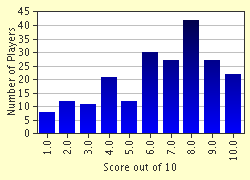Quiz Answer Key and Fun Facts
1. Believe it or not, the development of seeds was a major step in the evolution of plants. First to develop were 'naked' seeds (not surrounded by fruit), which can be found among the conifers and other plants of what taxonomic division?
2. The next big advance, seedwise, was the evolution of flowering plants which surround their seeds with lovely nutritious tissue (aka fruit). To what division do these plants belong?
3. Well, seeds are very nice, but you still have to have two parents. In plants, the parents are haploid gametophytes (the male gametophyte is often contained in a grain of pollen), and they produce a diploid sporophyte, which in turn produces gametophytes of both genders. What is this pattern called?
4. In flowering plants, the zygote is only one fertilization product. The other, the product of an event called 'double fertilization,' is a triploid cell that arises from the union of one sperm cell with two polar nuclei from the embryo sac. What is this triploid cell called?
5. Flowering seed plants are often divided into two groups: monocotyledons and dicotyledons. What does 'cotyledon' mean?
6. The earliest known seed plant, Elkinsia polymorpha, appeared in what geologic time period?
7. An unfertilized seed is partially surrounded by an integument (or protective layer). The hole in the integument is what pollen enters {through;} what is this opening called?
8. What is the process in which a seed begins to grow into a plant?
9. The protective layer surrounding a seed is also known by which of these less scientific-sounding names?
10. Seed plants evolved in the oceans and only later made the transition to land.
Source: Author
CellarDoor
This quiz was reviewed by FunTrivia editor
rossian before going online.
Any errors found in FunTrivia content are routinely corrected through our feedback system.

